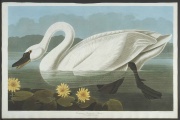Aquatint
Jump to navigation
Jump to search
Description
An intaglio etching technique invented in the 1760s by J.B. LePrince. Aquatints were popular until the late 1830s. To produce an aquatint the metal plate is sprinkled with a finely-powdered resin (Asphaltum, Rosin, etc.). The plate is heated to melt the resin, then cooled and placed in an acid bath. The acid lightly etches areas not covered with the resin. The results in a plate with fine pockmarks. The abscence of ink due to the random holes produces a variation in tone that resembles a watercolor washes.
Synonyms and Related Terms
aquatinte (Fr.); Aquatinta (Deut.); acquatinta (It.); aguatinta (Esp.); akvatint (Sven.)
Additional Images
Resources and Citations
- Ralph Mayer, A Dictionary of Art Terms and Techniques, Harper and Row Publishers, New York, 1969 (also 1945 printing)
- A Glossary of Paper Conservation Terms, Margaret Ellis (ed.), Conservation Center of the Institute of Fine Arts, New York City, 1998
- Luis Nadeau, Encyclopedia of Printing, Photographic, and Photomechanical Processes, Atelier, New Brunswick, 1997
- Comment: Multilingual Glossary for Art Librarians at http://www.ifla.org/VII/s30/pub/mgl.htm






